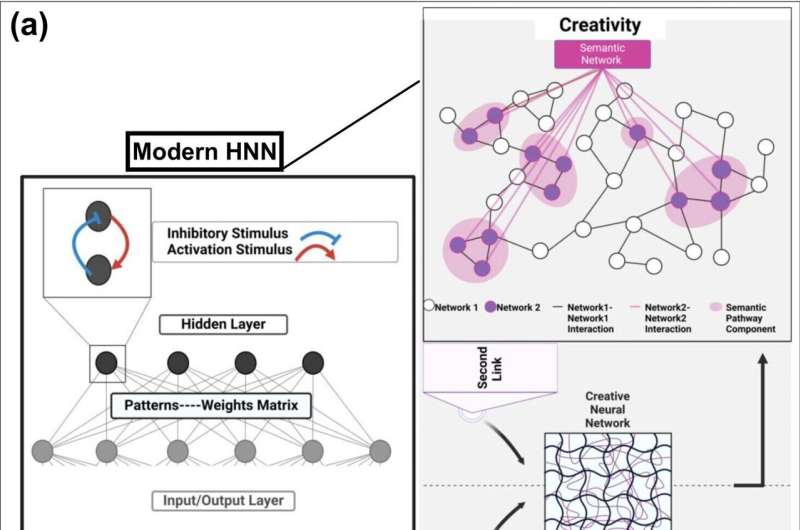Study sheds light on creative thinking

Creativity is the art of combining diverse ideas, making meaningful connections between concepts, and remaining focused to produce innovative ideas and useful solutions. Expansive and remote associations drive the generation of new ideas, while inhibition enables refining these ideas into practical solutions.
A recent study, led by former student Ronald Mtenga and directed by Dr. Mathias Bode and Dr. Radwa Khalil at Constructor University, has illuminated crucial conclusions about creative thinking processes. The , published in the Journal of Creative Behavior, provides a fresh perspective on the shift from analytical to creative thinking.
This study employed a unique approach by utilizing the Hopfield neural network (HNN), a neural network model, to investigate the mechanisms of semantic creative thinking–based associations. Researchers identified two key mechanisms that facilitate the transition from analytical to creative, associative thinking, suggesting that creative thinking often emerges when analytical thinking is insufficient.
Ronald Mtenga, the study's first author, holds a BSc in Electrical and Computer Engineering from Constructor University, where Dr. Mathias Bode is affiliated. Dr. Radwa Khalil is an expert in the creativity field, known for her multidisciplinary approaches that spans cognitive neuroscience, neuropsychology, computational modeling, and empirical research.
More information: Ronald Mtenga et al, Do Not Let the Beginning Trap you! On Inhibition, Associative Creative Chains, and Hopfield Neural Networks, The Journal of Creative Behavior (2024).
Provided by Constructor University















